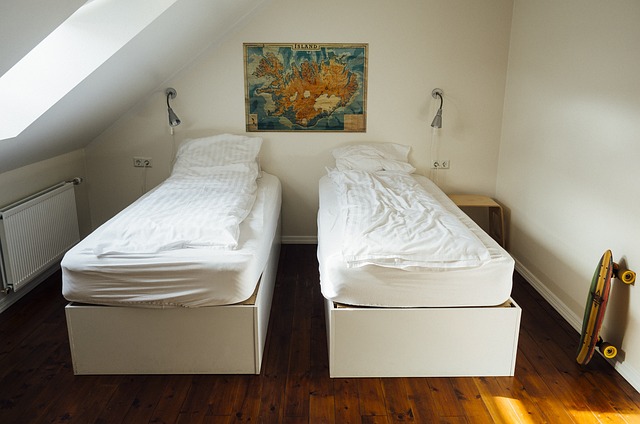Choosing the right longboard wheels is crucial for beginners. Larger wheel sizes (70-80mm) offer increased stability and reduced energy expenditure, ideal for cruising on smooth surfaces. Softer wheels (70A-85A durometers) provide better grip, absorb vibrations, and ensure a smoother ride, suitable for learning curves. Opting for larger, softer wheels enhances stability, reduces fatigue, and facilitates easier carving, improving the overall learning experience. Beginners should start with 80-84mm wheels (durometer 70-80A) for speed and control. Polyurethane is the most common material due to its balance of durability and flexibility. Regular cleaning, storage away from extreme temps, and inspecting for damage are essential for maintaining wheels. Soft wheels improve rides on city streets and rough terrain, but mixing with harder wheels is recommended for longer commutes.
For longboard enthusiasts, especially newcomers, wheel selection is a crucial yet often overlooked aspect of building your dream ride. This guide aims to demystify longboard wheels, focusing on larger and softer options ideal for beginners. We’ll explore key characteristics, benefits, and how to choose the right size and durometer. From common materials to care tips, this comprehensive introduction equips you with knowledge to enhance your longboard journey, making it smoother and more enjoyable for first-timers.
Understanding Longboard Wheels: A Beginner's Guide

Longboard wheels are designed differently depending on their intended use, with various sizes, durometers (hardness), and shapes catering to specific riding styles. For beginners looking to navigate smooth surfaces and cruise comfortably, larger wheels tend to be a popular choice. They offer several advantages, such as increased stability and reduced energy expenditure due to less frequent pushing.
When selecting wheels for your longboard, consider factors like wheel size (typically measured in inches), durometer ratings (measured on the Shore A scale, with higher numbers indicating harder wheels), and the shape of the wheel. For beginners, softer wheels (lower durometers) are often recommended as they provide better grip and absorb vibrations from the road surface more effectively, making for a smoother ride.
Defining 'Larger' and 'Softer': Key Characteristics

When considering larger, softer wheels for your longboard for beginners, it’s essential to understand what ‘larger’ and ‘softer’ actually mean in this context. In terms of size, larger refers to wider wheels, usually measured in millimetres (mm). For beginners, a wheel diameter between 70mm and 80mm is common, offering a balance between speed and manoeuvrability.
‘Softer’ describes the durometer or hardness of the wheel’s core. A softer wheel has a lower durometer rating, typically ranging from 70A to 85A. This translates to a more pliable material that absorbs impacts better, providing smoother rides and easier turns—perfect for learning curves on your longboard for beginners.
Benefits of Larger, Softer Wheels for Beginners

Larger, softer wheels are a great choice for longboard for beginners. They offer several key advantages that make learning to ride smoother and more enjoyable. First, their increased size provides better stability, which is crucial for newcomers who are still getting a hang of balancing and steering. This stability allows beginners to focus on developing their skills without worrying about losing control.
Additionally, the softness of these wheels contributes to a gentler ride. They absorb impacts from bumps and cracks in the pavement, making it less jarring for new riders. This comfort is especially beneficial during longer rides or when navigating unfamiliar terrain. Such wheels also provide better grip on various surfaces, enabling beginners to carve and turn more easily, further enhancing their learning experience.
Choosing the Right Wheel Size and Durometer

When selecting wheels for a longboard, choosing the right size and durometer is crucial for an optimal riding experience, especially for beginners. Wheel diameter, measured in inches, varies commonly from 70mm to 100mm or more on longboards. For newcomers, a good starting point is usually around 80-84mm wheels, offering a balance between speed and stability. This size provides a smooth glide while still allowing for responsive turns, which is essential for learning techniques like carving and basic maneuvers.
Durometer, often denoted by a Shore A scale, represents the hardness of the wheel. Softer durometers (higher numbers) provide better traction but wear down faster, while harder wheels (lower numbers) offer longer-lasting rolls at higher speeds. For beginners, opt for a durometer between 70-80A. This range strikes a perfect balance, ensuring control and comfort without compromising durability. Remember, the right wheel setup can greatly influence your overall longboarding enjoyment and learning curve, especially when cruising or riding in various environments.
Common Materials Used in Longboard Wheels

When it comes to choosing wheels for your longboard, understanding the materials is key, especially for newcomers to this exciting sport. The most common material used in longboard wheels is a type of plastic called polyurethane (PU). PU offers an excellent balance between durability and flexibility, making it ideal for various riding styles and terrains. This material allows the wheel to absorb shocks and vibrations, providing a smoother ride, which is perfect for beginners looking to build confidence on their boards.
Other materials, such as rubber or a combination of PU and other compounds, are also used to enhance specific properties. Rubber wheels offer better grip and traction, while composite materials can provide increased speed and stability. For longboarders seeking versatility, wheels with multiple durometer (hardness) options exist, catering to different riding conditions, from smooth urban streets to rougher off-road trails.
How to Maintain and Care for Your Longboard Wheels

Proper care and maintenance are essential for keeping your longboard wheels in top shape, especially for newcomers to longboarding. Start by cleaning your wheels regularly with a soft brush or cloth to remove dirt and debris. Avoid using harsh chemicals or abrasive materials that could damage the wheel surface. After cleaning, let them air dry completely before reassembling them on your board.
Another crucial step is to ensure you store your longboard wheels correctly when not in use. Keep them away from direct sunlight and extreme temperatures, as these conditions can cause premature wear and tear. Consider using a protective wheel bag or covering them to prevent scratches and debris from accumulating. Regularly inspect your wheels for any signs of damage or excessive wear, and replace them promptly if needed, especially after heavy usage or rough terrain.
Tips for Improving Ride Quality with Soft Wheels

Soft wheels can significantly enhance your ride experience, especially on a longboard for beginners. Here are some tips to optimize your journey:
When navigating city streets or rough terrain, softer wheels offer a smoother ride compared to harder ones. Consider using them for shorter distances to avoid excessive wear and tear. For longer commutes, a mix of wheel types can be beneficial; softer wheels for initial breaks and turns, then transitioning to harder wheels for high-speed stability. Regularly inspect your wheels, replacing worn-out or damaged soft wheels promptly to maintain optimal performance.
